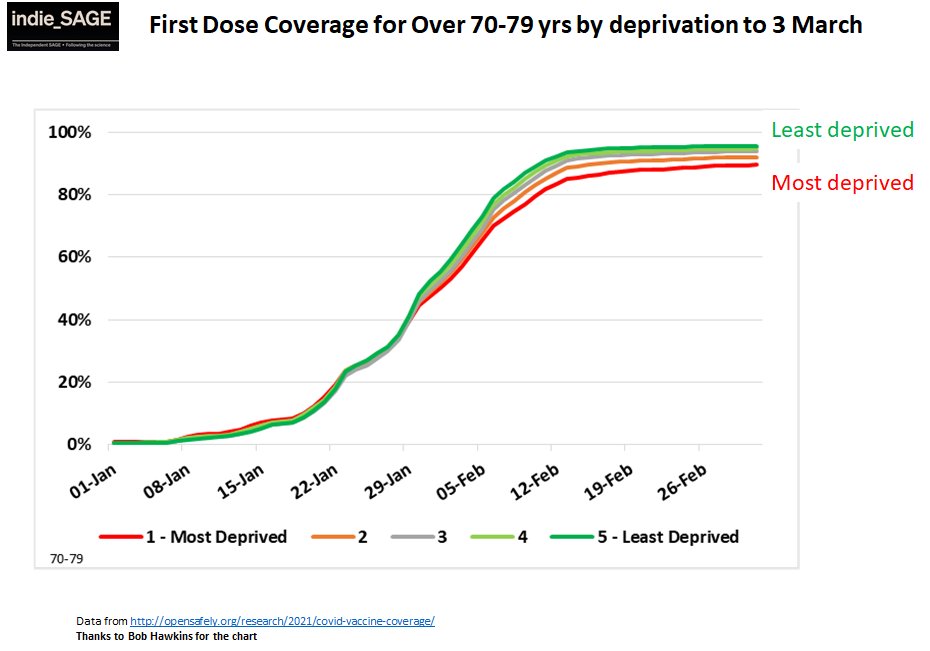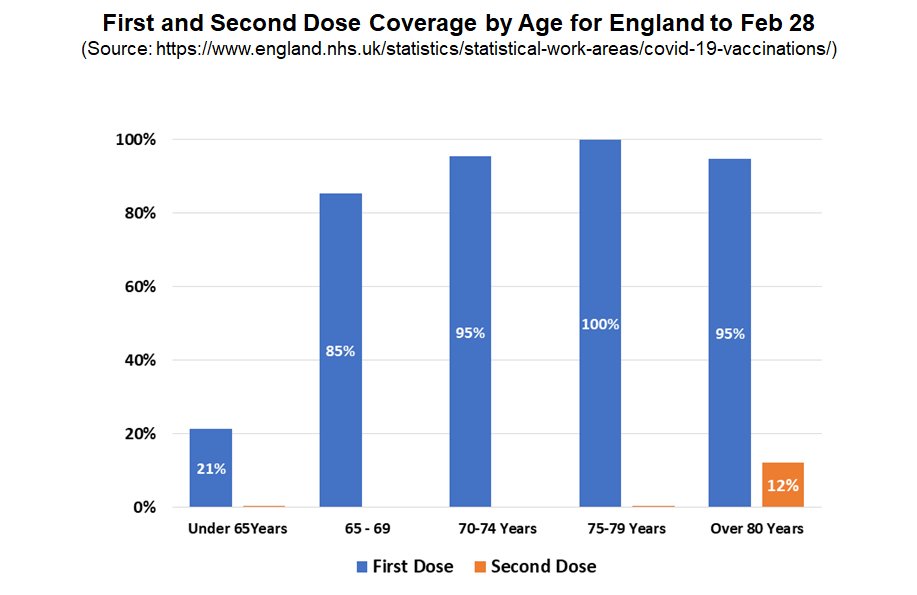
THREAD on schools in England so far & what next:
Context:
A few million people already do Lateral Flow Device tests (LFDs) for work each week.
On 8th March schools reopened and secondary school students were asked to 3 LFDs at school - 2 last week and 1 early this week.
Context:
A few million people already do Lateral Flow Device tests (LFDs) for work each week.
On 8th March schools reopened and secondary school students were asked to 3 LFDs at school - 2 last week and 1 early this week.
People with symptoms of Covid continue to get a single PCR tests.
People who test positive after taking LFDs at *home* or for health & care work can also get a PCR test to confirm the result.
People taking LFDs at work, at school or in a test centre do NOT get confirmatory PCR
People who test positive after taking LFDs at *home* or for health & care work can also get a PCR test to confirm the result.
People taking LFDs at work, at school or in a test centre do NOT get confirmatory PCR
IMPORTANT: PCR test results take a while to come through, so we can only ever use positive results from 4 or more days ago.
LFD test results report immediately, and so, where there is no confirmatory PCR, we can use test results up to yesterday.
LFD test results report immediately, and so, where there is no confirmatory PCR, we can use test results up to yesterday.
Overall, cases have reduced a *tiny* bit week on week. How does this break down by test?
Looking at just +ve PCR tests & confirmed (home) LFDs - which should be unaffected by school test numbers, there has been an 11% drop week on week. So continued reduction (good) but slowing
Looking at just +ve PCR tests & confirmed (home) LFDs - which should be unaffected by school test numbers, there has been an 11% drop week on week. So continued reduction (good) but slowing

Looking at the number of *all* LFD tests (at home, school, work etc) you can see the massive jump (~1 million) when schools went back.
After the 1st three tests, students switch to (voluntary) home tests. We'll see if test numbers start to fall...
But what about case numbers?
After the 1st three tests, students switch to (voluntary) home tests. We'll see if test numbers start to fall...
But what about case numbers?

So far, school tests have NOT needed confirmatory PCR tests. So we can look at results up to yesterday.
The jump in positives over last week is likely due to school students, assuming workplace testing hasn't changed.
There was *another* big jump in positives this Monday.
The jump in positives over last week is likely due to school students, assuming workplace testing hasn't changed.
There was *another* big jump in positives this Monday.

This likely corresponds to 3rd school test - and the number of overall LFD tests were the same this monday and previous monday... so looks as if more children tested positive.
What could this mean?
What could this mean?
It could be that students have got better at doing the tests (it's hard to hit the right spot) and so more +ves are being picked up.
It could be that more of this Monday's tests were school tests compared to work tests (no way to tell) compared to last week.
It could be that more of this Monday's tests were school tests compared to work tests (no way to tell) compared to last week.
It could be that there was *some* increased transmission in schools last week (which would be unsurprising) and this is now showing up in more positive results.
But if there is, we might expect to start seeing symptomatic PCR cases going up over next week (which we aren't yet)
But if there is, we might expect to start seeing symptomatic PCR cases going up over next week (which we aren't yet)
BUT increases in cases in younger adults might be offset by reductions in older vaccinated adults - so we need to wait for age data.
As school testing moves into the home, fewer and fewer people might do the tests & they'll get confirmatory PCR, reducing overall case numbers.
As school testing moves into the home, fewer and fewer people might do the tests & they'll get confirmatory PCR, reducing overall case numbers.
In general we should be doing confirmatory PCR testing for ALL lateral flow device tests anyway as I explain in this thread.
https://twitter.com/chrischirp/status/1370808763142316034?s=20
Basically there is *some* sign that there *might* be an increase in asymptomatic cases over last week. But increases are small, there was no confirmatory PCR for first 3 school tests & there are other possible explanations for increase.
These are v preliminary thoughts. /END
These are v preliminary thoughts. /END
• • •
Missing some Tweet in this thread? You can try to
force a refresh










